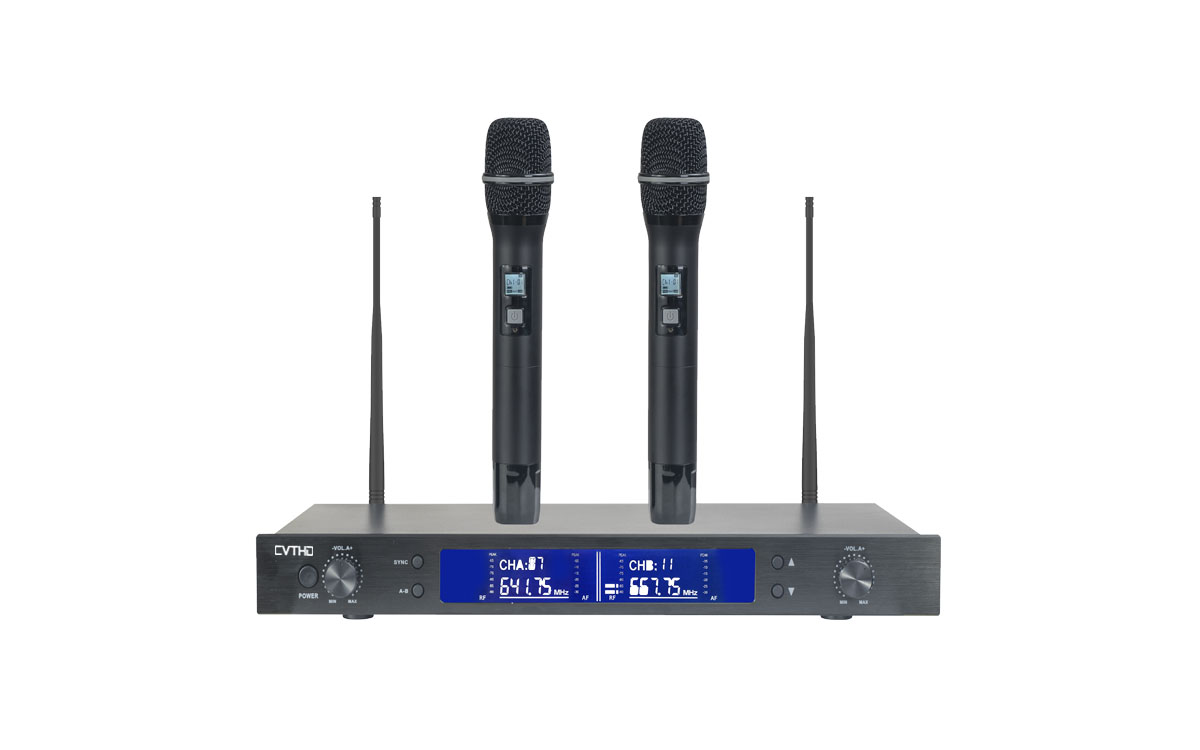News

The wireless microphone is converted from sound into a signal, and then modulated into high-frequency radio waves transmitted, and then received back to demodulate, amplify, and reduce to sound This whole process, there are many links, a link did not notice, maybe it can still work, but its stability, working range will be reduced a little, one more link did not notice, and will be reduced a little, the scope of use and narrowing point, so cumulative, multiple links at the same time loopholes, wireless microphone is either interfered, or "running frequency", It cannot be used normally even at a close distance. On the contrary, all links have noticed that the anti-interference ability of the wireless microphone will be greatly enhanced, and the stability will be greatly improved.
Issues that operators should pay attention to
Issues that should be paid attention to before use
The operator should carefully check the wireless microphone before performance or use, connect the system correctly, set up the antenna reasonably, and ensure that the microphone is in a normal working state, mainly paying attention to the following points. In order to avoid the phenomenon of no sound from the wireless microphone during performance or use
Part 1
Check that the battery compartment is in good contact and whether the battery is charged.
Part 2
When powering on, the receiver should be turned on, check the RF meter header, make sure that there is no RF interference on
this channel, and then turn on the transmitter.
Part 3
Check the microphone mute switch to make sure the wireless transmitter and microphone are always active.
Part 4
Do not stack receivers on top of each other so that they do not interfere with each other.
Part 5
Remove the power supply after use, because individual microphones are flick switches, are in standby, or live work will use up
the battery.
2. Issues that should be paid attention to in use
Part 1
During the performance, pay attention to whether the RF signal indicator is normal to prevent interference from external
wireless signals
Part 2
During microphone handover, avoid stacking multiple open wireless microphones together, and do not approach the receiving
antenna to avoid intermodulation interference and affect the use of wireless microphones.
Part 3
If there is noise in the sound, it may be that the microphone head is not installed in place, or the sensitivity of the microphone
head is set too high, or the frequency point used is interfered, mainly due to the following reasons.
(1) There are interference sources in the site (such as mobile phones, walkie-talkies, cordless phones and other electromagnetic
wave interference), in this case, first change the frequency of the receiver, find the frequency of the RF signal light of the receiver
without interference, and perform frequency matching; Especially when using multiple sets of wireless microphones, special
attention should be paid to pulling the frequency band.
(2) Poor reception conditions in the venue (such as columns blocking the venue, or metal equipment and glass reflections in
the venue, and the sound control room leaving the venue far away from the venue is blocked by walls or corners, etc.) will
affect the normal reception of signals. There are usually several ways to solve the problem.
(1) Try to use a diversity wireless system (that is, one microphone, two antennas), because the reception range of the two
antennas is large.
(2) You can change the direction and angle of the antenna, which can improve the reception effect.
(3) If the receiving environment is too poor, such as the sound control room is not in the venue, just extend the antenna to
solve the problem
(4) When it is necessary to replace the wireless microphone battery in use, the microphone power should be turned off first,
then replaced, and then turn on the microphone switch.
(5) Note that there is a power selection in the wireless microphone handle, L file is low-power transmission, H file is
high-power transmission (can transmit and receive long distance and power consumption is too large), according to the
use environment to set
3. Problems that users should pay attention to in use
Part 1
Do not hold the mesh tip of the microphone in your hand.
Because the receiving part of all microphones has a certain directivity, if you hold the grille part with your hand, it will change
the directivity and frequency response of the microphone, and will also produce feedback and howling effects due to the
aggregation effect of the palm.
Part 2
Do not hold the antenna emitter of the microphone
General handheld microphone, its transmission circuit and antenna is located in the lower part of the microphone
(away from the end of the microphone), when the human hand touches the antenna part, most of the RF energy is
lost due to the inability to enter the air, reducing the range of use of the wireless system, affecting the reception effect,
and the middle of the normal handheld microphone is used.
Part 3
The microphone should be properly distanced from the mouth
When using a handheld wireless microphone, the distance between the microphone and the mouth is generally
kept at 5-250px, too close to produce a close speaking effect, too far sound is very light, will destroy the sound quality;
When using lavalier microphones, prevent the microphone from being too far from the mouth and try to get as close to
the mouth as possible; The use of headband microphones is to avoid the mouth front of the microphone head, to avoid the
impact of the vocal airflow, should be moved to both sides.
Part 4
Avoid pointing the microphone directly at the speaker
If the microphone is pointed directly at the speaker, a closed loop is formed for the whole system, which will produce positive
feedback (howling), which must be avoided.
Part 5
Try to avoid placing two wireless microphone transmitters close together to avoid intermodulation interference.